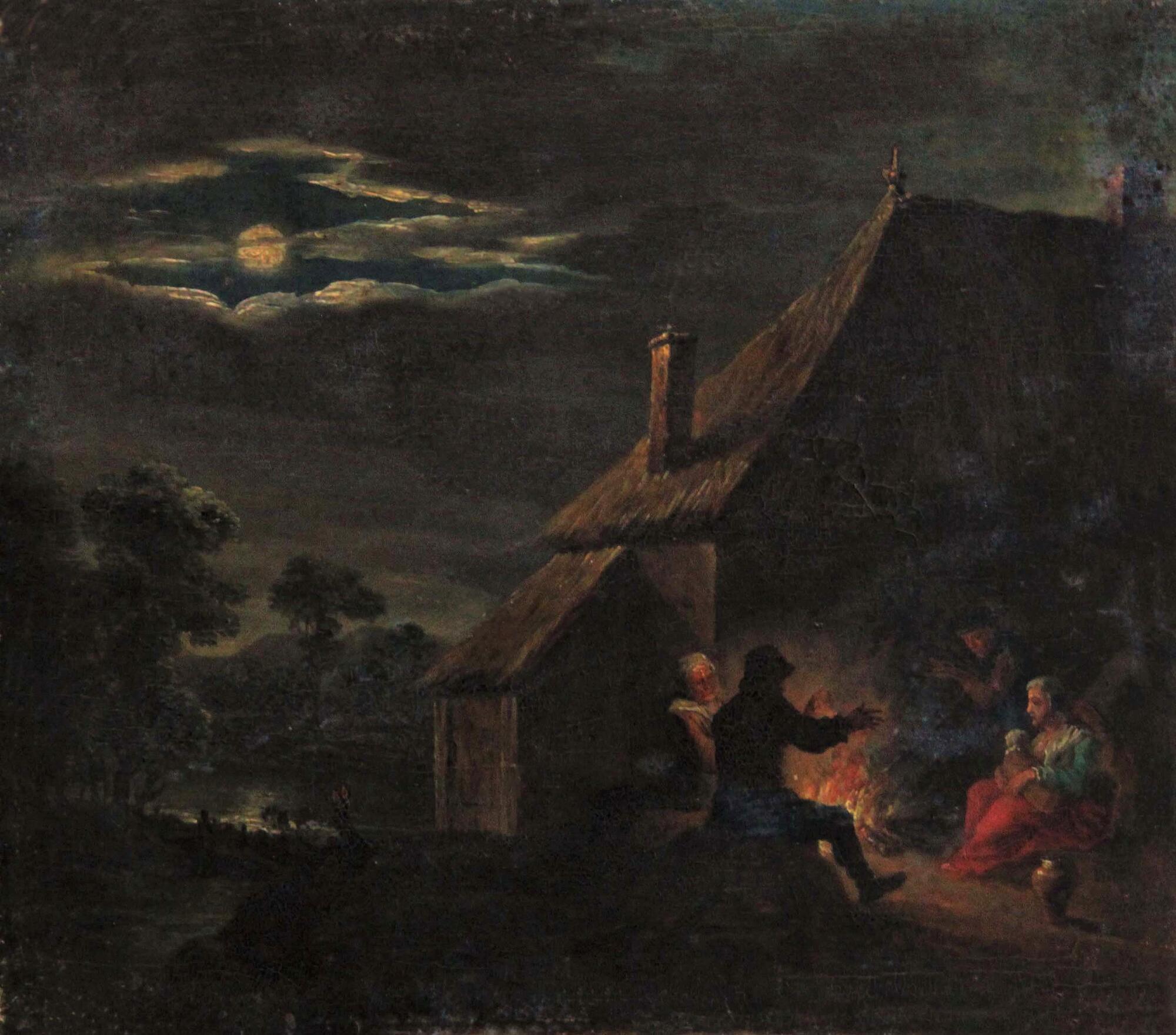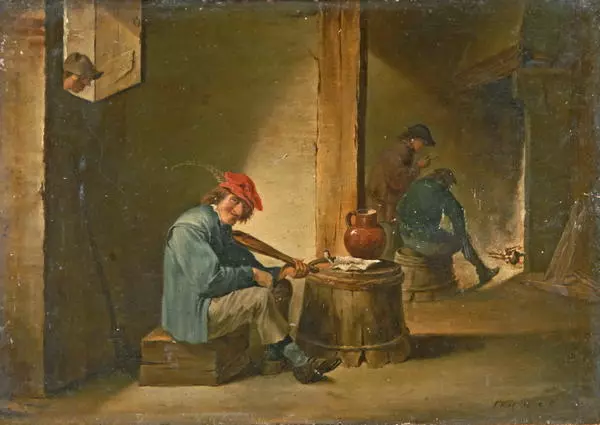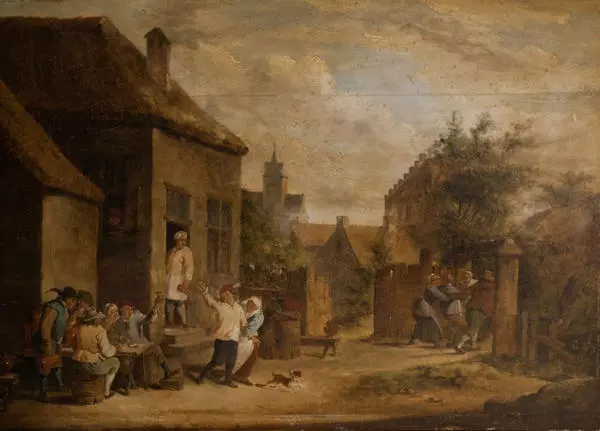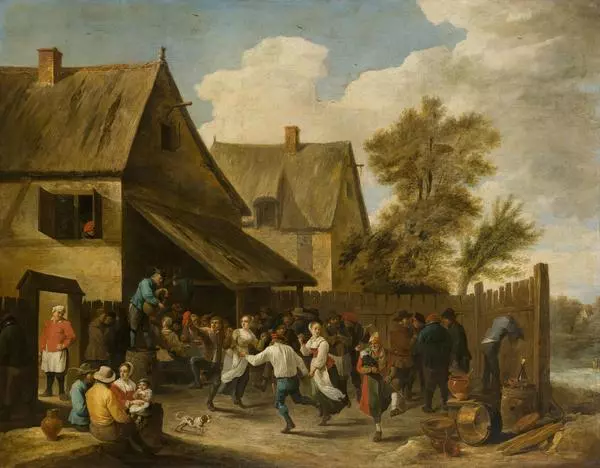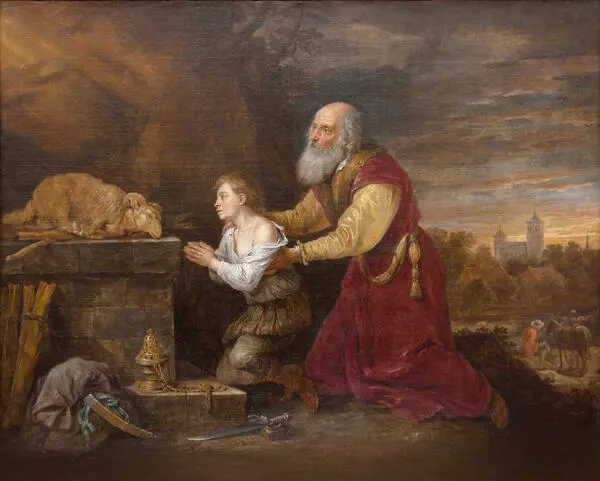The painting by an unknown artist belongs to the works of ‘The Little Dutchmen’. The Little Dutch is a conventional name for a group of 17th century artists. The use of the term ‘little’ can be explained by two factors: firstly, the relatively small size of the works, and secondly, their specific theme. The artists of this conditional group did not paint monumental canvases, they turned to ‘little’ (at that time — ‘lower’) genres that did not imply a particular scope.
The 17th century is the Golden Age of Holland. This is a time of economic growth, as well as the acquisition of the religious and political independence of the United Provinces. In these favorable terms, Dutch painting also flourished. The buyers of the paintings were burghers, artisans and even peasants. It was the way they decorated their homes. This is partly the reason for small size of the paintings — they were placed not at the palaces, but small houses with small rooms. Due to the size the cost of the work was also small, since it took less materials to create. This fact also supported the demand for the arts. Thus, during the 17th century, according to various estimates, from 5 to 10 million paintings were created by Dutch masters. Most of them have not survived to this day. However, those works that have survived give us an idea of ‘The little Dutchmen’s’ high level of skills as well as the scrupulousness with which they approached the image of every smallest detail.
“The Little Dutchmen” had several favorite genres to which they most often turned: everyday scenes, still life and landscape. Each of the genres reflected a way of Dutch life. “By the Fire” combines two genres at once: a scene of everyday life and a landscape.
In the foreground, we see peasants sitting around a fire, they are chatting at the end of the working day. The action is set against the backdrop of a typical Dutch landscape with low trees and a moonlit pond. Probably, the gatherings dragged on, and the peasants sat up late for conversations. Most often, the paintings of the Dutch had a certain symbolism, understandable to contemporaries. Whether it was a scene of everyday life, a landscape or a still life — in each picture there was message, mainly about the transience of life, human carelessness and the frailty of everything in this world. It is surprising that with such a choice of themes, the canvases are devoid of tragedy. For example, in this picture we see a calm and even cozy scene of gatherings by the fire, but the moon depicted in the sky hints that the peasants did not notice how quickly time passed and how night fell in their conversations. With their lives full of with worries, conversations and household chores, people often do not notice how time passes: day follows night, weeks pass, seasons change each other…
The 17th century is the Golden Age of Holland. This is a time of economic growth, as well as the acquisition of the religious and political independence of the United Provinces. In these favorable terms, Dutch painting also flourished. The buyers of the paintings were burghers, artisans and even peasants. It was the way they decorated their homes. This is partly the reason for small size of the paintings — they were placed not at the palaces, but small houses with small rooms. Due to the size the cost of the work was also small, since it took less materials to create. This fact also supported the demand for the arts. Thus, during the 17th century, according to various estimates, from 5 to 10 million paintings were created by Dutch masters. Most of them have not survived to this day. However, those works that have survived give us an idea of ‘The little Dutchmen’s’ high level of skills as well as the scrupulousness with which they approached the image of every smallest detail.
“The Little Dutchmen” had several favorite genres to which they most often turned: everyday scenes, still life and landscape. Each of the genres reflected a way of Dutch life. “By the Fire” combines two genres at once: a scene of everyday life and a landscape.
In the foreground, we see peasants sitting around a fire, they are chatting at the end of the working day. The action is set against the backdrop of a typical Dutch landscape with low trees and a moonlit pond. Probably, the gatherings dragged on, and the peasants sat up late for conversations. Most often, the paintings of the Dutch had a certain symbolism, understandable to contemporaries. Whether it was a scene of everyday life, a landscape or a still life — in each picture there was message, mainly about the transience of life, human carelessness and the frailty of everything in this world. It is surprising that with such a choice of themes, the canvases are devoid of tragedy. For example, in this picture we see a calm and even cozy scene of gatherings by the fire, but the moon depicted in the sky hints that the peasants did not notice how quickly time passed and how night fell in their conversations. With their lives full of with worries, conversations and household chores, people often do not notice how time passes: day follows night, weeks pass, seasons change each other…
